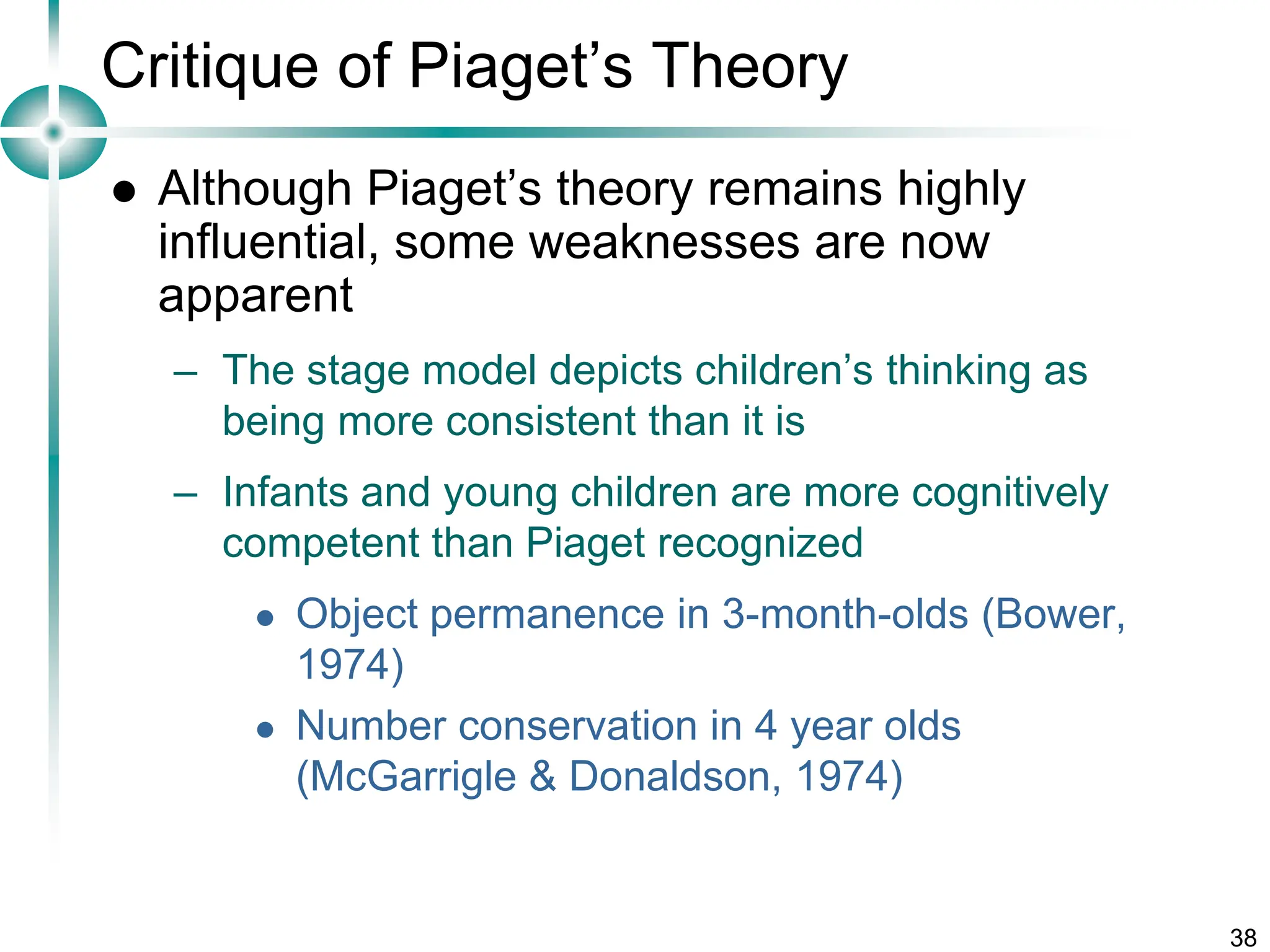Piaget proposed four stages of cognitive development: sensorimotor, preoperational, concrete operational, and formal operational. In the sensorimotor stage from birth to age 2, infants learn through senses and actions. In the preoperational stage from ages 2 to 7, children use symbols but think egocentrically. During the concrete operational stage from ages 7 to 11, children think logically about concrete events. In the final formal operational stage from age 11 onward, adolescents reason abstractly and hypothetically. Piaget's theory emphasized how children construct knowledge through interactions with their environment.






































